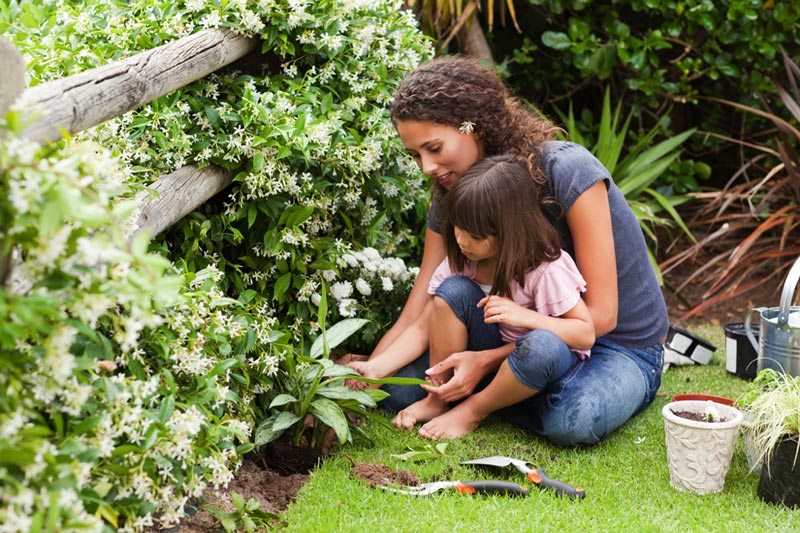
Getting children involved with gardening has so many rewards it’s difficult to list them all in just one blog. For starters, if you have an outdoor venue, it gets them outside more often and a little more sunshine and time spent out of the house will better for them in the long run.
Even if you only have an indoor herb garden, a smaller patio space simply for vegetables or planted a fruit tree in the yard, your child gets to experience caring for a living, growing, food producing plant. Watching them grow, watering on a regular basis, the necessity of fertilizer and other foods are all great sources of interest and a learning opportunity that occurs almost constantly during their development.
Flower Power
Some parents may ignore flowers in the gardening process when it comes to kids, but some of these plants are edible. For example, the stems and leaves of most varieties of daisies are edible and often used in salads. This shows children many different ways that some plants can serve a variety of different purposes. Don’t forget about the “birds and the bees” and their important role they play in this process.
The Learning Curve
Remember to keep giving your children important lessons during the entire growing process, from seed to harvest. If you are starting with a seed that needs to germinate, explain this process to your child, how the water, oxygen and the soil all work together to begin this growth from a tiny seed into a much larger plant.
As the little sprout comes up, depending upon the child’s age, this is where you could explain photosynthesis to them. For youngsters, it could be as simple as the necessity of sunlight and carbon dioxide (or what we exhale) given to plants that in return give us oxygen (what we need to breathe) and they also give us food in return for our care.
Harvesting Honors
Be sure to give your child the honor of helping with the harvesting of their labors, but the lesson doesn’t stop there. Make them a bigger part of the event when they can help to choose how the “fruits of their labors” will be used. Let’s say you’re picking tomatoes, ask them about the many different things we can make with this fruit (not a vegetable):
- Different sauces for pasta and pizza
- As an ingredient for salsa along with other vegetables and herbs
- Used in salads and sandwiches … just to name a few
Remember to include other farmers and food producers in the process. For example, bread and pasta don't magically appear on grocery store shelves without the wheat being grown in a field first, processed and later packaged.
Circle Of Life
Completing the circle of life with plants and foods often ends with them landing into a compost pile, another important part of gardening and chance for a life lesson. What begins with a seed, grows into a flowering plant that produces food, doesn’t need to end there. The creation and use of a compost pile is a great way to explain the circle of life to children.



























